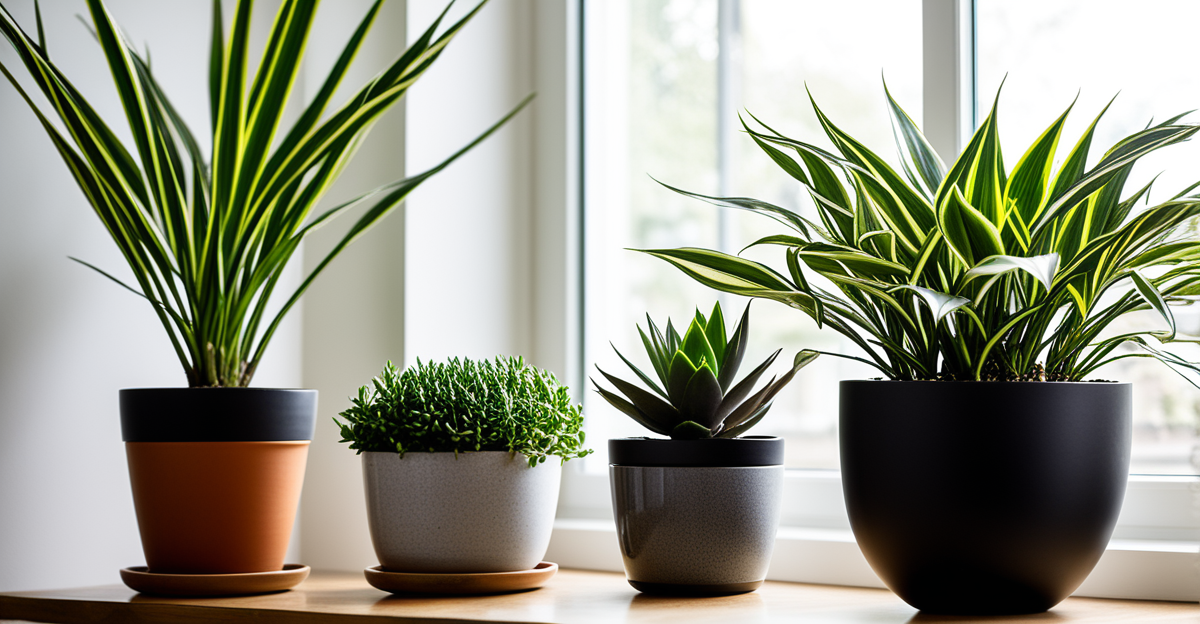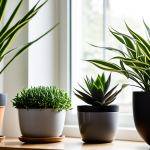Essential Considerations for Choosing Indoor Plants in UK Homes
When selecting indoor plants in UK homes, it is crucial to assess the available light, space, and typical climate conditions. UK home environments often feature moderate natural light and varying humidity levels due to central heating, affecting plant growth. Understanding these factors helps tailor your indoor plant selection UK to thrive within these settings.
Choosing plants according to the care level you can commit to is equally important. Some species require frequent watering and attention, while others tolerate occasional neglect. Recognizing your willingness for daily or weekly maintenance improves the chances of plant longevity.
This might interest you : What Are the Key Considerations for UK Garden Design?
Matching plants to UK home environments involves considering common indoor conditions. Many UK households experience lower light in winter and fluctuating temperatures. Selecting species known for resilience to these variations ensures better adaptation. For example, plants that withstand lower light and moderate humidity levels are preferred for indoor plant selection UK.
In summary, successful indoor plant care UK depends on aligning plant needs with your home’s light exposure, space constraints, typical climate, and your personal care commitment. This strategic approach avoids common pitfalls and enhances both plant health and your satisfaction.
Have you seen this : How Can You Transform Urban Apartments into Cozy Homes with Minimal Effort?
Top Recommended Indoor Plants for UK Homes
Choosing the best indoor plants UK involves prioritizing species that thrive with minimal care and suit typical UK home environments. Many homeowners seek easy houseplants UK options due to limited daily attention or fluctuating indoor conditions. These plants combine low maintenance with resilience, ensuring satisfaction.
Species like snake plants, spider plants, and peace lilies are among the most popular UK houseplants. They tolerate lower light levels common in British interiors and adapt well to varying humidity indoor plants UK experience, especially with central heating systems causing dryness. Their robust nature makes them ideal for beginners or those with busy lifestyles.
Additionally, plants such as pothos and ZZ plants rank highly because they survive occasional missed watering and still maintain their lush appearance. Incorporating these in your indoor plant selection UK means less worry about daily upkeep while still bringing greenery and life to your space.
In summary, focusing on low-maintenance plant options ideal for UK households ensures your indoor planting venture is both enjoyable and successful. These resilient varieties complement the climate and lifestyle typical of UK homes, minimizing challenges often seen in indoor plant care UK.
Top Recommended Indoor Plants for UK Homes
Choosing the best indoor plants UK involves focusing on varieties that thrive with minimal fuss. Easy houseplants UK have gained popularity because their low-maintenance nature suits many lifestyles. For example, snake plants and pothos are top picks; both tolerate lower light conditions common in UK home environments and require infrequent watering.
Popular UK houseplants also account for the unique humidity and temperature fluctuations indoors. Many UK homes experience drier air due to central heating, which can stress plants not adapted to such conditions. Peace lilies and spider plants excel here, as they prefer moderate humidity and help improve indoor air quality.
When selecting the best indoor plants UK, consider their adaptability to changing seasons. Some plants slow growth during colder months, demanding less care yet remaining resilient. Choosing plants known for this behavior reduces maintenance burdens and enhances success in indoor plant care UK efforts.
In summary, the ideal easy houseplants UK are those combining resilience, aesthetic appeal, and minimal upkeep. This triad ensures your indoor plant selection UK thrives despite typical UK home environmental challenges, providing lasting enjoyment.
Matching Plants to Light, Temperature, and Humidity in the UK
Understanding houseplant light requirements UK is essential for successful indoor plant selection UK. UK home environments often receive limited natural light, especially during winter months, with short daylight hours and overcast skies. Many indoor areas are north-facing or have shaded windows. Selecting plants that tolerate low or indirect light, such as snake plants or ZZ plants, aligns well with these conditions.
Indoor temperature for plants UK typically ranges between 18°C and 24°C but can fluctuate due to central heating. These temperature changes may cause stress if plants are placed near heaters or drafts. Choosing species resilient to such shifts, like peace lilies or pothos, helps maintain plant health.
Humidity indoor plants UK require varies as central heating reduces moisture levels, creating a dry environment. Plants with moderate to low humidity needs adapt better to typical UK conditions. Using pebble trays or humidifiers can aid plants sensitive to dryness, but selecting inherently tolerant species is more practical for most households.
By matching plants to the specific light, temperature, and humidity characteristics of UK homes, indoor plant care UK becomes more manageable and rewarding. This targeted approach supports plant longevity and vibrant growth despite environmental challenges.
Essential Considerations for Choosing Indoor Plants in UK Homes
Selecting the right indoor plant selection UK hinges upon evaluating three key factors: light, space, and climate typical to UK home environments. Most UK homes receive limited natural light, especially during winter, which means plants with lower houseplant light requirements UK are preferable. Understanding your indoor light—from bright windows to shaded corners—guides better choices suited for your environment.
Space constraints also shape plant selection. Compact species or trailing types are ideal for smaller rooms, while larger open spaces accommodate floor-standing plants. Considering available room size helps avoid overcrowding and ensures healthy growth.
Another crucial aspect is matching plants to the indoor climate. UK homes often use central heating, reducing indoor humidity. Choosing plants adapted to lower moisture levels improves their resilience. Likewise, indoor temperature fluctuations occur but typically stay within a range comfortable for many hardy houseplants.
Finally, your personal commitment to indoor plant care UK impacts success. Some plants tolerate occasional neglect, while others demand consistent watering and feeding. Assessing your care capacity prevents disappointment and supports thriving, beautiful greenery tailored to UK home environments.
Practical Tips for Selecting Indoor Plants for Every Room
Selecting indoor plants for different rooms UK depends largely on light, humidity, and space. For the living room, which usually has ample indirect light, robust plants like rubber plants or fiddle leaf figs thrive. These species add greenery and improve air quality without demanding intensive indoor plant care UK.
Best plants for bedrooms UK often require lower light and contribute to restful atmospheres. Snake plants and peace lilies fit well, as they tolerate dimmer lighting and help purify air. Their low maintenance aligns with a typical indoor plant selection UK for relaxing spaces.
In bathrooms, humidity levels rise, creating ideal conditions for plants that prefer moisture. Ferns and spider plants flourish here, benefiting from the consistent humidity indoor plants UK experience in such rooms. Their care is straightforward and suits the unique setting.
By matching species to each room’s environmental characteristics, your indoor plant care UK routines become easier. Thoughtful selection tailored to light, space, and humidity nuances across UK home environments enhances plant health and visual appeal throughout your home.
Essential Considerations for Choosing Indoor Plants in UK Homes
Choosing the right indoor plant selection UK begins with assessing your home’s light, space, and typical climate. UK home environments often present limited natural light, especially during winter, so focusing on plants that tolerate low or indirect light is essential. Measuring light levels in various rooms before selecting species helps ensure your plants thrive.
Space is another vital factor. Smaller rooms benefit from compact plants or those that trail, while larger areas can host bigger floor-standing varieties. Overcrowding can stunt growth and complicate indoor plant care UK, so matching plant size to available space improves outcomes.
The UK’s indoor climate, shaped by central heating, causes reduced humidity and fluctuating temperatures. Selecting plants adapted to these conditions, such as those tolerant of dry air and moderate temperature swings, increases resilience.
Your personal commitment to indoor plant care UK must also be considered. Some plants require daily attention, while others flourish with infrequent care. Honest self-assessment of your willingness and ability to maintain watering and feeding schedules reduces risks of plant stress and loss.
Incorporating these considerations—light, space, climate, and care level—forms the foundation for successful indoor plant selection UK tailored to UK home environments.
Care Guidance to Ensure Plant Longevity and Health
Effective indoor plant care UK involves routines tailored to typical UK home environments, accounting for light, humidity, and temperature shifts. Regular but moderate watering is crucial; overwatering often leads to root rot, a common issue in UK homes with central heating that dries the air. Monitoring soil moisture before watering helps avoid this problem.
Common houseplant issues in UK settings include leaf yellowing caused by insufficient light or inconsistent watering. Using a consistent schedule for plant maintenance reduces stress on plants and promotes steady growth. Pruning and removing dead leaves also keep plants healthy and attractive.
Troubleshooting problems starts with identifying environmental causes. For example, brown leaf tips often indicate low humidity indoor plants UK experience, which can be mitigated using pebble trays or periodic misting. Additionally, pests like spider mites thrive in dry conditions, so routine inspection and gentle cleaning are advised.
Overall, adapting indoor plant care tips UK to your home’s specific conditions supports longevity. Awareness of typical challenges and proactive maintenance nurtures vibrant, thriving plants that enhance your living spaces.
Essential Considerations for Choosing Indoor Plants in UK Homes
Selecting the right indoor plant selection UK requires careful evaluation of light, space, and climate, unique to UK home environments. Light levels in UK homes tend to be low, especially during winter, so prioritising shade-tolerant plants suits most interiors. Understanding your home’s light intensity—whether bright, indirect, or dim—guides which plants will thrive with minimal stress.
Space limitations play a crucial role. Compact species fit smaller rooms better, while larger areas can accommodate taller or floor-standing plants. Overcrowding reduces air circulation and impedes growth, complicating indoor plant care UK efforts.
Typical UK interior climates impact plant health. Central heating creates dry air and fluctuating temperatures, so choosing plants that withstand dryness and moderate temperature swings is essential. Examples include resilient species that adapt well to these conditions without requiring high humidity.
Personal commitment to indoor plant care UK influences success. Some plants demand frequent watering and feeding, while others tolerate periodic neglect. Honest self-assessment of your time and care willingness reduces plant loss risk and ensures a rewarding indoor plant selection UK experience aligned with your lifestyle.









